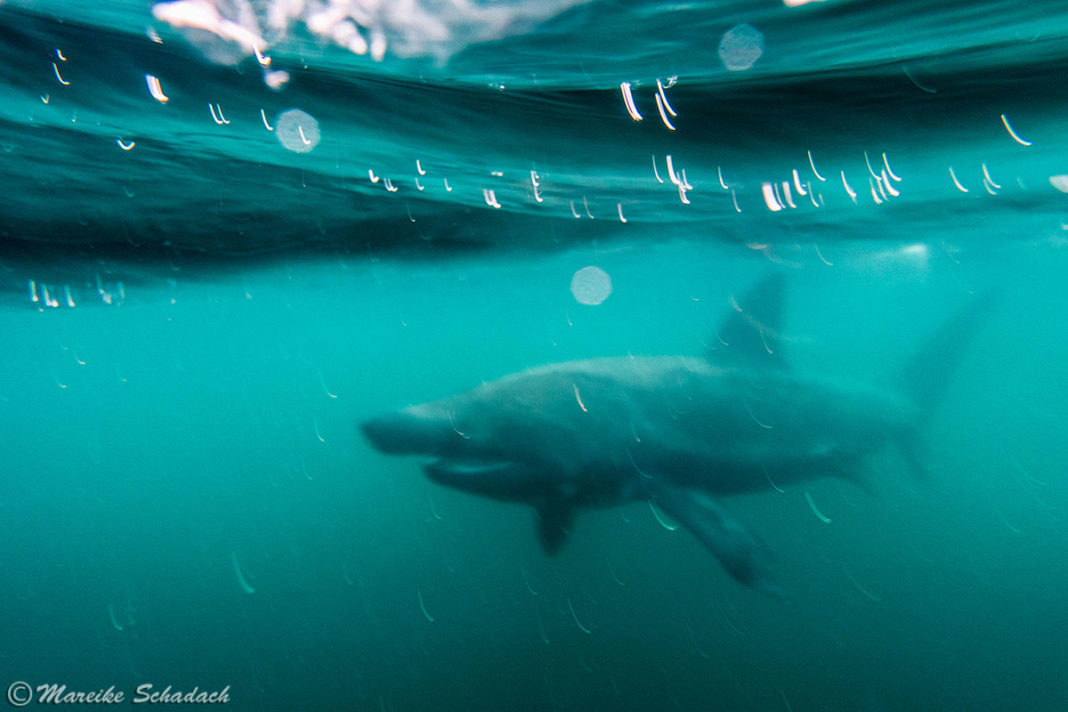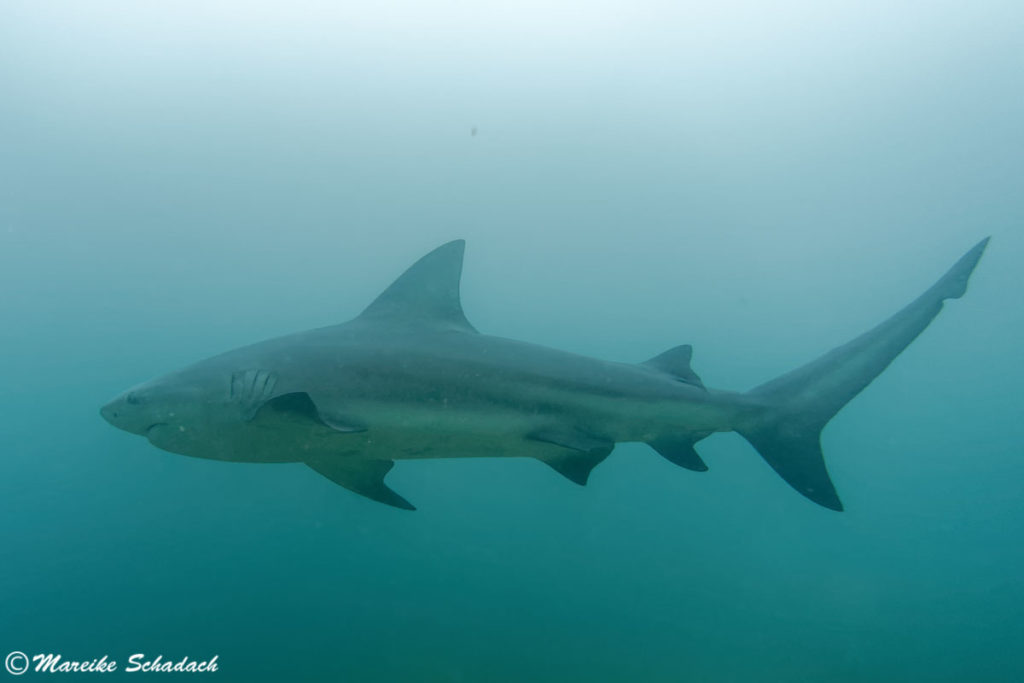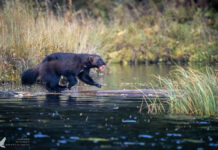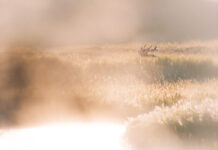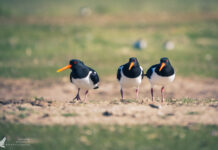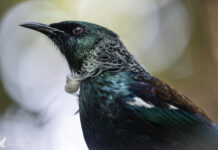Scotland. The Scottish Hebrides are known for their wild scenery, white sandy beaches and great hiking. Less well known is the fact that the Hebridean island of Isle of Coll offers a unique opportunity to snorkel with giant sharks in Scotland. The Basking Sharks - as they are called in Scottish - spend the summer in the plankton-rich waters of the Hebrides. Here they can be experienced (almost) up close from July to early September.
Unassigned, unpaid advertising. The article contains affiliate links.
Table of Contents and Quick Navigation
Excited Waiting for the Basking shark
All good Things come in Threes
Encounter under Water
Lasting Memory of the Basking Shark
About Finding Basking Sharks
And when is the best Time to see the Basking Sharks in Scotland?
Basking Sharks - a few Facts
Isle of Coll - Highlights of Hebridean Island
Excited Waiting for the Basking shark
With the fins on our feet and the diving masks on, we sit tense on the side of the ship. Our field of vision is severely restricted by the masks. Shortly before a basking shark showed up. Five pairs of eyes try hard to spot the dorsal fin of the shark. In the wavy water this is quite difficult. The boat swings in the waves, I shiver in my wet wet wetsuit. Finally the water temperature of about 14°C takes its toll.
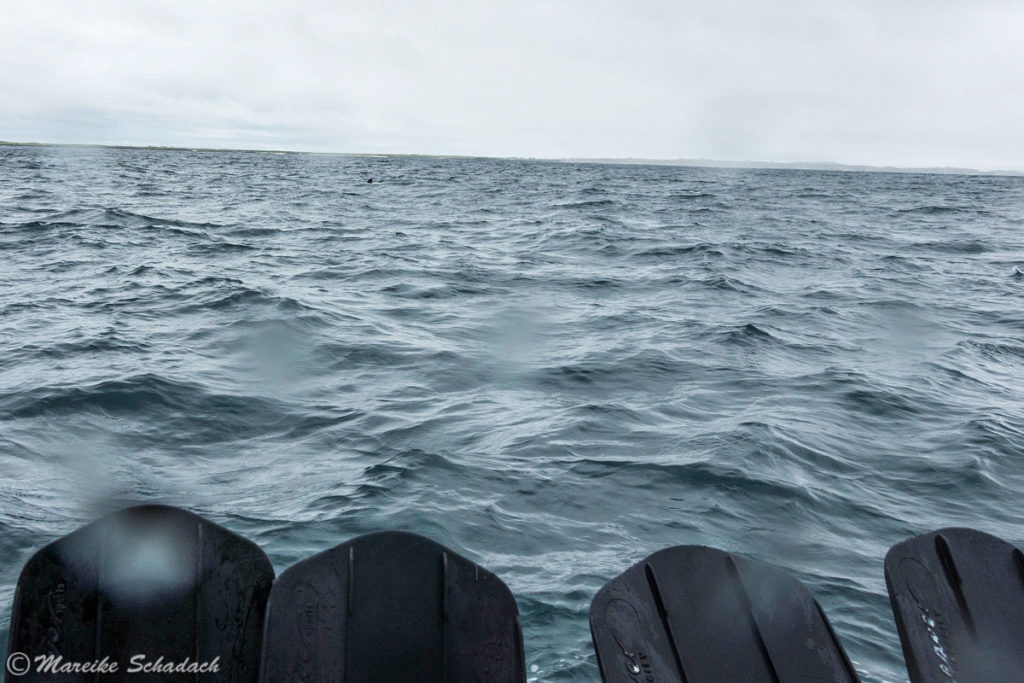
While I still try to attract the shark with my thoughts, our guidin** points to starboard. As if attracted by a magnet, all five pairs of eyes suddenly point in the same direction. At a distance of about twenty meters the dorsal fin cuts through the water. Our guide gives the start signal, I get air, press my underwater camera firmly against me and glide silently into the cold water. Now it has to go fast. I float as fast as I can towards the shark, always following the raised arm of our guide.
**I have the word "guidin" as a name for a female guide once picked up somewhere. Actually there is no word at all. But I like the word creation and I like to use it.
All good Things come in Threes
It's our third attempt to find the basking shark underwater. The first times we were not fast enough. So the shark passed us unseen or changed direction. Under water the visibility is about ten meters. Therefore, finding the shark is not so easy. However, it is just as difficult at the water surface. Because only if you are lifted up by a wave, there is a chance to discover the dorsal fin between the wave crests.
My eyes scan the surface of the water. Finally I see it. His dorsal fin is only about fifteen meters away. While my heart is beating faster and faster, I take my head under water.

Encounter under Water
I don't see anything at first. Then I get a fright. He is huge and comes straight at me. As if spellbound, I stare at the silhouette, which becomes bigger and clearer in front of me. My eyes don't want to let go of the shark anymore. I stretch my camera to the shark. Without looking at the display, I press the shutter button. At the same time he slowly pulls past me with his mouth closed. Overjoyed and still a bit paralyzed from what I just experienced, I drift in the water. To my left I see two other snorkelers and paddle towards them. I recognize our guide with a guest. She points in my direction and I waved both with a grin around my snorkel. Still indulging in the luck I need a while until I finally understand what she wants from me. So I turn my head to the right. Right next to me is the shark. Even closer than before.

Lasting Memory of the Basking Shark
The encounter with the basking shark was such an intense experience that I will probably never forget. After the second encounter I fell snorkeling in the water into the arms of our guide. I cheered and thanked her and the giant shark. My eyes were still wet with joy. Afterwards we were supplied on board with warm beverages and a few biscuits and made ourselves then on the way home.
A big thank you from me to the team of Basking Shark Scotland!
About Finding Basking Sharks
Basking sharks can be seen in the waters of the Hebrides in summer, most probably in the months of July to early September. They then migrate south. As pure plankton eaters, they stay where the plankton is to eat. On quiet days this is on the surface of the water. On windy days, however, when the water is mixed, the plankton is more evenly distributed in the water body. As a result, sharks can also feed in deeper water. For this reason we did not see any sharks at the beginning of our snorkeling tour. But we hoped that the conditions would change after the change of tides. And so it was. In the afternoon we had more luck and found a giant shark eating at the surface. The animals are unmistakable because often three parts of the body emerge from the water at the same time: the tip of the tail fin, the dorsal fin and the tip of the nose.

And when is the best Time to see the Basking Sharks in Scotland?
Giant sharks migrate to the Scottish Hebridean Islands in spring. They follow the plankton bloom and the appearance of zooplankton, which feeds on phytoplankton. Between July and early September, the chances of seeing giant sharks are greatest. However, as they are wild animals, a successful encounter can never be guaranteed. It is therefore worth planning at least two or even three days for snorkeling with giant sharks in Scotland. Since the journey to the Isle of Coll is relatively costly, it would be a shame to return home without a shark sighting.

Basking Sharks - a few Facts
Biology
The basking shark is after the whale shark the second largest shark species. It is over ten meters long and weighs up to several tons. The mouth can be up to one meter wide and is lined with special bones with which it filters the plankton out of the water. It feeds exclusively on plankton.
The dorsal fin can grow to over a metre, but sometimes it tips over at the surface due to its weight and size.
Basking sharks have a very small brain, but a well-developed sense of smell. Their eyesight is poorly developed and is probably mainly used to recognize the light conditions and to avoid obstacles.
The liver is the largest organ and can account for up to a third of body weight. It contains an oil and is also used as a source of energy in times when food is scarce. In addition, it provides buoyancy in the water, as sharks do not have a swim bladder. Unfortunately, this oil was one of the reasons why the basking sharks were hunted extensively in former times. The shark liver oil obtained was then used in lamps, cosmetics, perfumes and lubricants.
With the basking sharks young animals develop first in an egg bag and are born afterwards alive. Per "birth" then up to six young giant sharks with a length of about 1.5 to 2 meters are born.
Nutrition and Migration
Around Scotland are some of the most nutritious cold waters in the world. Every year in spring there are explosive plankton blossoms. As a result, animal zooplankton also multiplies on a massive scale. Due to the rich food supply the giant sharks are attracted in spring. Thus also the most important migration of the giant sharks coincides with the first plankton bloom of the year. The highlight of the migration is in midsummer. Then numerous giant sharks can be observed feeding off the Scottish Hebrides. In September and October the sharks migrate south. Their migration route runs across the Atlantic to Newfoundland and towards the Bay of Biscay and the Azores.
Protection Status and Threats of Basking Sharks
Basking sharks are listed as 'endangered' on the IUCN Red List and are also listed as 'endangered' in the North-East Atlantic. In the meantime the sharks are protected in Great Britain. But in other countries the sharks are still hunted.
A further threat for basking sharks is the garbage floating in the sea and the microplasty. Because they filter this together with the zooplankton from the water. The plastic then fills their stomachs. In the worst case, the animals can starve to death with a full stomach.
In addition, the global warming affects the sharks: This is because the distribution of certain zooplankton species is shifting to the cooler north and there are fears that this will affect the distribution of the giant sharks and changes in migration patterns.
Isle of Coll - Highlights of Hebridean Island
On the Hebridean island Isle of Coll you will find a lot of peace, nature and several beautiful bays with white sandy beaches. A special feature is the dark night sky and the great starry sky. Because on the whole island there are no street lights, which obstruct the view into the stars. Here you can find out with which highlights the Isle of Coll welcomes you and what makes it so unique.

Book Recommendations for Scotland
You want to know where the journey goes? Then I recommend the following travel guides, which have proven themselves on my trip:
Have you ever been snorkeling in Scotland with the basking sharks yourself? Do you have any questions about my article or further suggestions? If so, please write me a comment!
Do you want to know when there are new articles on my blog? Then follow me on Facebook, Pinterest or Instagram. I would also be very happy if you share my article with your friends.
You want more sharks? Recommendations to read more
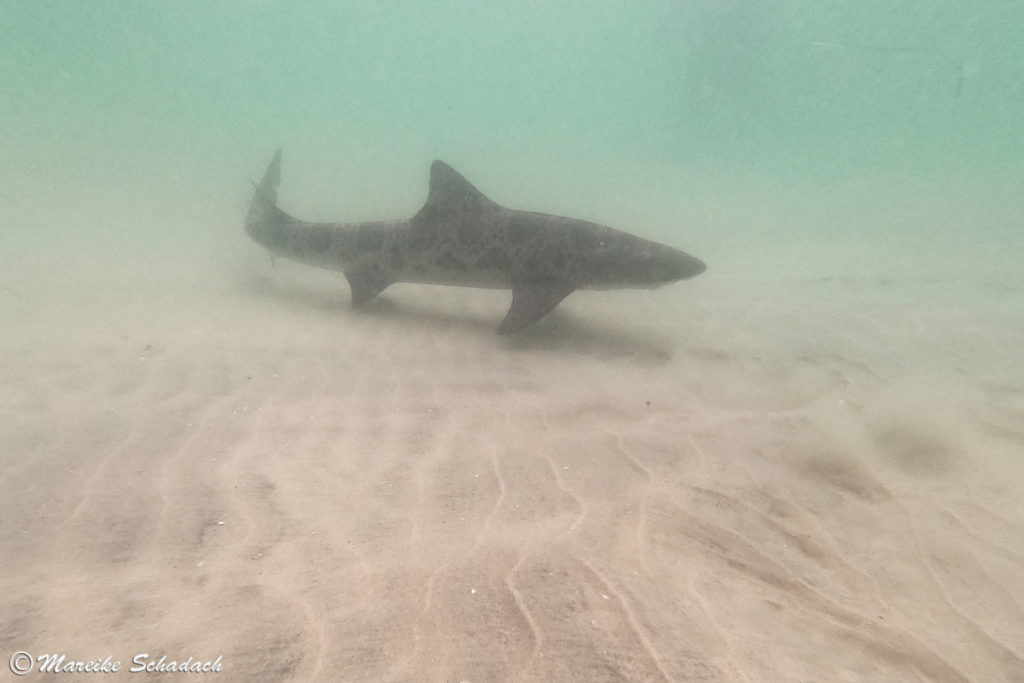
"Snorkeling in La Jolla - the best Tips". Hier könnt ihr direkt vor dem Strand mit Leopardenhaien schnorcheln.
